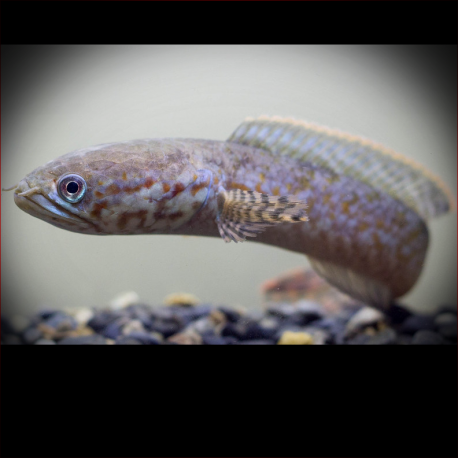More info
Datasheet
| Minimum Tank Size | 115 litres / 30.38 US gallons |
| Maximum Size | 17.0cm / 6.69inches |
| Temperature | 14°C / 57.20°F - 28°C / 82.40°F |
| Hardness | 2.02dgH / 36ppm - 20.00dgH / 357ppm |
| pH | 6.0-8.0 |
Behaviour
In general, Channa are best maintained in species-specific aquarium setups, although C. bleheri can coexist in a community arrangement with non-territorial, large tankmates that are peaceful and not viewed as prey. Young Rainbow Snakehead specimens can cohabit initially, but as they reach sexual maturity, they tend to exhibit aggressive behavior towards each other, although individual variations exist. If a pair forms, they typically show peaceful behavior towards each other but aggression towards other conspecifics.
Feeding and Diet
Rainbow Snakeheads are obligate predators that primarily feed on smaller fishes and insects in their natural habitat but can adapt to dead alternatives in captivity. While some individuals may accept dried foods, these should not form the staple diet. Young fish can be fed chironomid larvae, small earthworms, chopped prawn, among others, while adults accept fish flesh, prawns, mussels, live river shrimp, and earthworms. It's crucial to avoid feeding mammalian or avian meat, as well as 'feeder' fish, to prevent health complications.
Reproduction & Dimorphism
Channa Bleheri are biparental free spawners and have been successfully bred in aquarium settings. During the breeding process, the male and female engage in a courtship embrace, similar to anabantoids. Unlike some fish that build bubble nests, the eggs of C. bleheri float at the surface, where both parents oversee the defense of the eggs and subsequent fry. Female Rainbow Snakeheads tend to be larger and deeper-bodied than males, especially when gravid.
Habitat and Distribution
Endemic to the Brahmaputra River basin in the states of Assam and Arunachal Pradesh, northeastern India, C. bleheri inhabits tropical monsoon rainforest regions characterized by heavy rainfall, high humidity, and warm temperatures. The fish construct burrows near tree stumps in inundated forested areas during monsoons, serving as refuges during dry periods. Due to its specific microhabitat requirements, restricted range, and vulnerability to overfishing, C. bleheri is considered a conservation concern.

